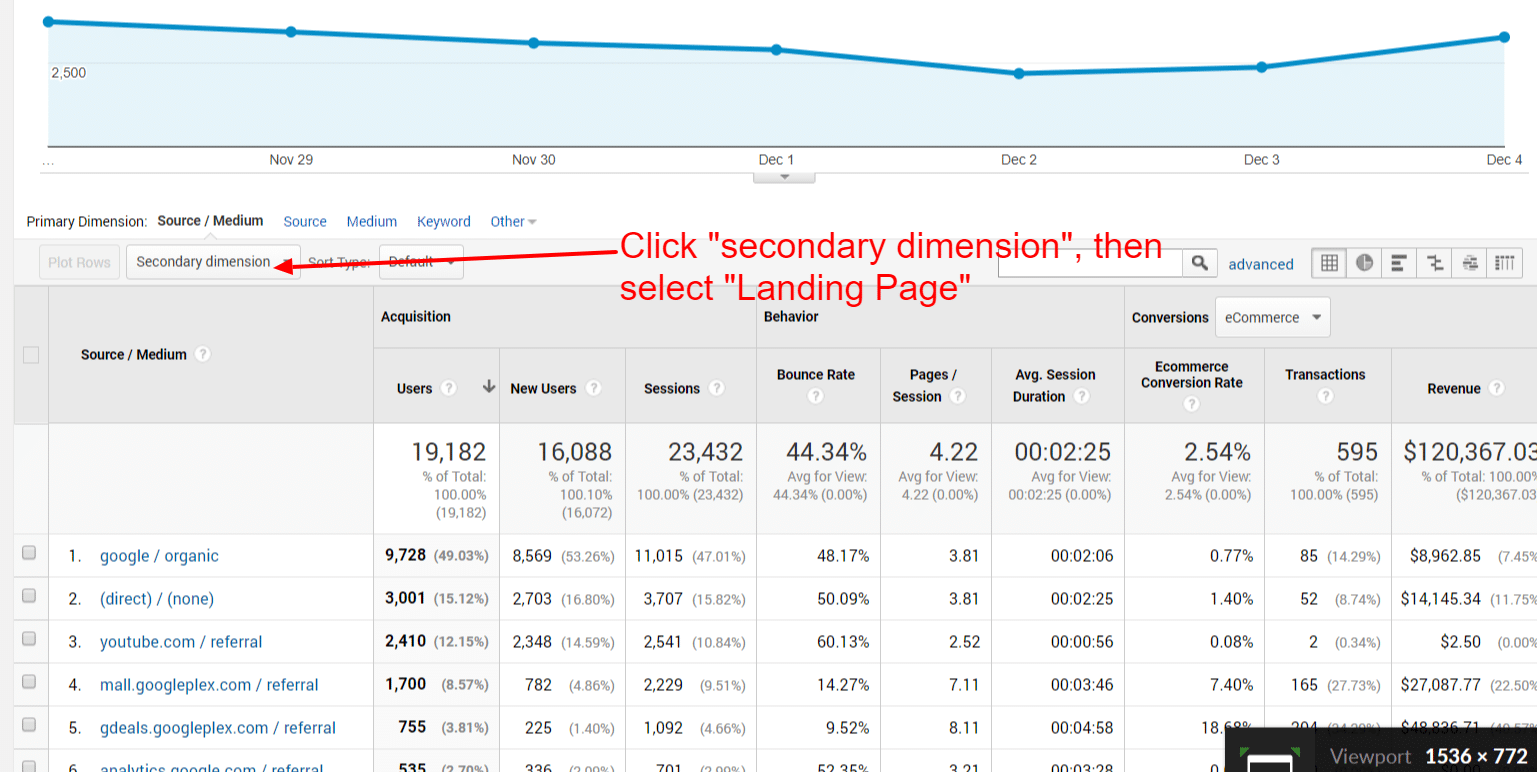Enhance Your Information Analysis Making Use Of Second Measurement in Google Analytics
Discovering the capacities of additional dimensions in Google Analytics opens up a realm of possibilities for refining data analysis. The capacity to study info better past the surface level presents a nuanced sight that can form calculated decisions. By layering additional measurements onto main data collections, an even more detailed narrative arises, clarifying customer interactions and performance signs. This dynamic method to information assessment holds the crucial to opening hidden patterns and patterns that might transform just how services analyze their electronic footprint.
Recognizing Additional Measurements
Additional measurements in Google Analytics refer to added criteria that can be added to the main measurement, enabling for a much more comprehensive evaluation of data (Secondary Dimension in Google Analytics). By integrating additional measurements, experts can sector and filter information to discover patterns, fads, and connections that might not be noticeable when looking at the data as a whole.

Benefits of Utilizing Additional Dimensions
When assessing data in Google Analytics, the application of secondary dimensions supplies vital insights into customer habits and efficiency metrics. By adding an additional dimension to your main information, you can delve deeper right into the attributes of your internet site visitors and their communications.
Furthermore, secondary dimensions enhance the context of your primary information, offering a much more extensive view of user interaction and performance metrics. In general, the use of additional dimensions in Google Analytics can substantially boost the depth and quality of your information evaluation, leading to even more enlightened decision-making and boosted results.
Exactly How to Add Additional Dimensions
By including second dimensions in Google Analytics, customers can obtain deeper insights right into their data analysis process, enabling for more detailed evaluation of user habits and performance metrics. Adding secondary dimensions is an uncomplicated procedure that can significantly improve the depth of evaluation. When in the record, find the "Additional measurement" tab over the information table.
Studying Information With Second Measurements
Making use of secondary dimensions in information analysis gives an extra comprehensive understanding of user habits and efficiency metrics. By including an additional measurement to your primary data embeded in Google Analytics, you can dig deeper into the features additional resources of your internet site visitors and their communications. Incorporating the key measurement of 'source/medium' with the secondary dimension of 'landing page' can disclose which particular pages are drawing in web traffic from different resources, assisting you enhance these web pages for better engagement.

Fundamentally, examining data with secondary dimensions empowers you to get useful understandings into customer habits, identify trends, and make informed decisions to enhance the efficiency of your digital residential or commercial properties.
Ideal Practices for Additional Measurements
In data evaluation, integrating second dimensions properly can considerably boost the depth of understandings originated from metrics and customer actions patterns. When utilizing additional measurements in Google Analytics or any various other analytical device, it is crucial to stick to ideal techniques to guarantee the precision and relevance of the information evaluation.
One key finest technique is to very carefully select second measurements that complement the main measurement being assessed. Choosing additional measurements that give extra context or further segmentation can use an extra detailed understanding of the data. It is also crucial to avoid overcomplicating the analysis by consisting of way too many additional measurements, which might lead to confusion or dilution of understandings.
Additionally, it is advisable to experiment with various mixes of key and secondary dimensions to reveal brand-new correlations and trends. Routinely refining the selection and examining of second measurements based upon the details goals of the evaluation can cause even more workable understandings. By following these best practices, data experts can take advantage of secondary measurements effectively to enhance the total data analysis process and decision-making capacities.

Verdict
To conclude, integrating additional dimensions in Google Analytics is vital for a detailed information analysis strategy. By leveraging secondary dimensions along with key ones, online marketers and experts can reveal useful insights and relationships that can educate decision-making and enhance digital marketing methods. Comprehending exactly how to successfully use additional measurements and following finest techniques will certainly allow professionals to remove meaningful data and boost their general performance metrics.
Second dimensions in Google over at this website Analytics refer to additional criteria that can be added to the primary measurement, allowing for a more thorough analysis of information. By including secondary measurements, analysts can sector and filter information to discover patterns, patterns, and correlations that may not be obvious when looking at the information as a whole. Incorporating the key dimension of 'source/medium' with the second dimension of 'touchdown web page' can expose which specific pages are attracting website traffic from various resources, helping you enhance these pages for much better involvement.
One trick ideal method browse around here is to thoroughly pick additional measurements that match the key measurement being analyzed. By adhering to these best methods, information analysts can leverage additional measurements efficiently to boost the general data evaluation procedure and decision-making capabilities.